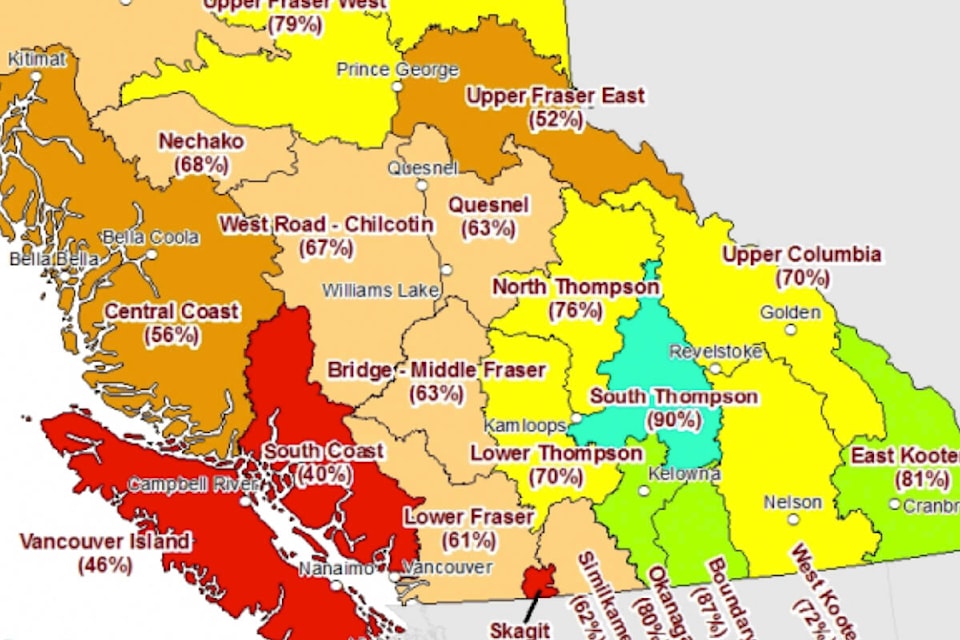Snowpack levels across B.C. and Vancouver Island are well below normal, according to the River Forecast Centre’s March snowpack report, and Parksville is no exception.
Vancouver Island’s snowpack is 54 per cent below normal and the snow water density measured at Mount Arrowsmith is 415-millimetres as of March 1, significantly less than 2023 (666-millimetres) and 2022 (803-millimetres).
“The City is fortunate to have two sources of water supply, giving us some resiliency when the snowpack is lower than normal,” the City of Parksville said in an email to the PQB News.
“The Englishman River is our surface water supply which relies on flows released from Arrowsmith Dam and base flow from the river itself. We also have a ground water supply in the aquifer beneath the city and have a series of wells capable of delivering water to the community for consumption.”
The city’s water system includes 18 deep groundwater wells drawing from an aquifer on the south edge of the city limits.
In the summer months, additional water comes from the Englishman River which is supplemented with water from the Arrowsmith dam. The distribution system consists of 85-kilometres of mainline water pipes and about 5,000 serviced lots, according to the city’s website.
READ MORE: Vancouver Island’s dramatically low snowpack raising ecological questions
The city is currently considering regional water conservation measures in consultation with the Regional District of Nanaimo and neighbouring communities.
The average daily water consumption within the city varies from 2,339,000 litres per day to more than 12,116,000 litres per day during peak summer season, according to the city.
Provincial snowpack levels remain “very low,” as of March 1, on average 34 per cent below normal across B.C. Last year, the provincial average was 91 per cent for March, according to the province’s snowpack report.
“Low snowpack and seasonal runoff forecasts combined with warm seasonal weather forecasts and lingering impacts from on-going drought are creating significantly elevated drought hazards for this upcoming spring and summer,” the report said.
— NEWS Staff
